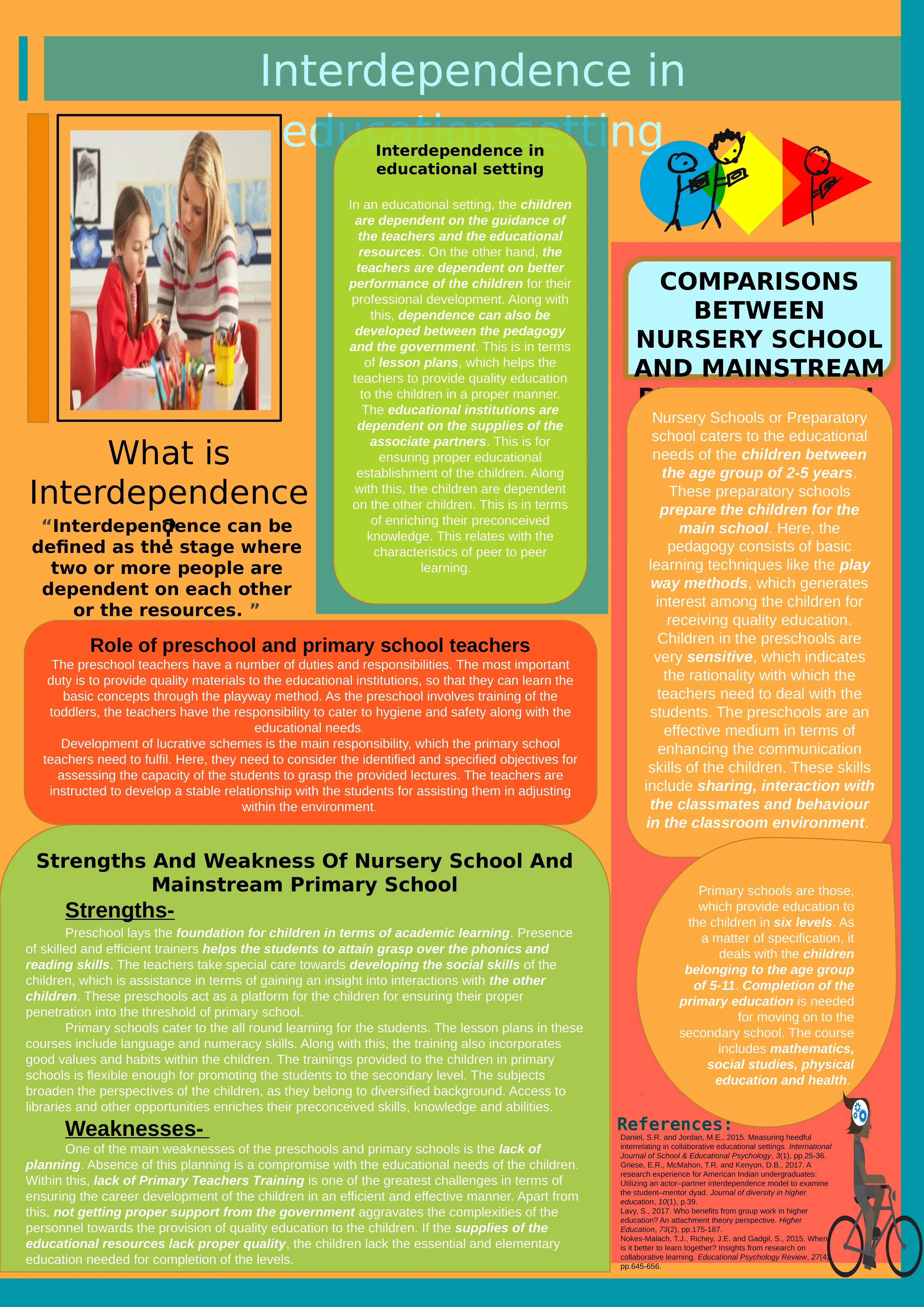Analyzing Interdependence in Nursery and Mainstream Primary Schools
VerifiedAdded on 2023/06/15
|1
|946
|78
Essay
AI Summary
This essay explores the concept of interdependence within educational settings, focusing on a comparison between nursery schools and mainstream primary schools. It defines interdependence as a state of mutual reliance among individuals and resources, highlighting how children depend on teachers and resources, while teachers rely on student performance. The essay contrasts nursery schools, which cater to children aged 2-5 using play-based learning, with primary schools that offer a more structured curriculum for children aged 5-11. It discusses the roles of teachers in both settings, noting the importance of hygiene and safety in preschools and the development of comprehensive lesson plans in primary schools. Strengths and weaknesses of both systems are examined, including the foundational academic learning provided by preschools and the all-round learning and broader subject perspectives offered by primary schools, alongside challenges such as lack of planning and inadequate resources. The analysis emphasizes the need for quality educational resources and teacher training to ensure effective career development for children.







![[object Object]](/_next/static/media/star-bottom.7253800d.svg)